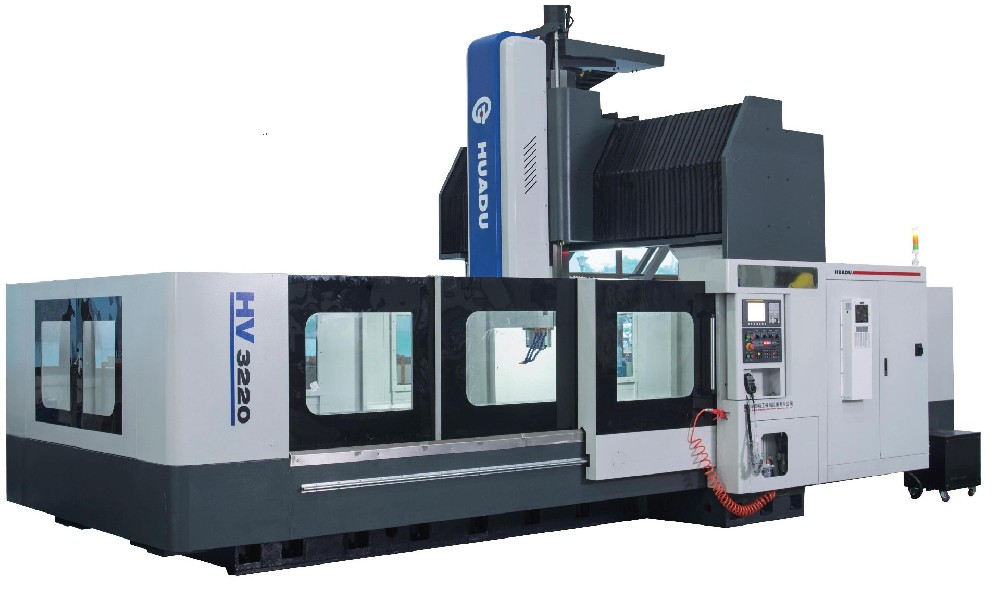The new manufacturing industry will showcase the investment
Article source: Click:Date:2019-02-26 13:05:03
On April 28, Wang Liming, chief engineer of the Ministry of Industry and Information Technology, revealed at the information conference at the first quarter that the "China Manufacturing 2025" overall plan has been reviewed by the State Council executive meeting and will be released soon. This is a sign that China's manufacturing is on the national strategy. For most traditional manufacturing industries, this will be a painful and difficult challenge; but for the 10 industries that have long been hit by the stock market, it will be another beginning.
For China's large-scale but overcapacity manufacturing companies, the most helpless thing is that in the capital market, they find themselves as people without stories. For the government departments, it is even more sad to want to go. When leading China's manufacturing industry to make a splendid transformation, it found that many manufacturing companies have become more difficult.
On April 28, Wang Liming, chief engineer of the Ministry of Industry and Information Technology, revealed at the information conference at the first quarter that the "China Manufacturing 2025" overall plan has been reviewed by the State Council executive meeting and will be released soon. This is a sign that China's manufacturing is on the national strategy. For most traditional manufacturing industries, this will be a painful and difficult challenge; but for the 10 industries that have long been hit by the stock market, it will be another beginning.
Investment opportunities in 10 major industries
It is understood that the overall plan of "Made in China 2025" referred to by Wang Liming is tentatively named "The Outline of China Manufacturing 2025". The top 10 industries that have been written into are: the new generation of information technology industry, high-end CNC machine tools and robots, aerospace equipment, offshore engineering equipment and high-tech ships, advanced rail transit equipment, energy-saving and new energy vehicles, power equipment, new Materials, biomedical and high-performance medical equipment, agricultural machinery and equipment.
Officials from the relevant departments of the Ministry of Industry and Information Technology reported that the above-mentioned 10 major industries have been confirmed to be written in "Made in China 2025". They are the ten key areas that China will focus on in the future and strive to achieve breakthrough development. Enterprises in these industries, especially those leading enterprises, will receive financial support from the Ministry of Industry and Information Technology, special development funds, and related ministries. At the same time, projects in these fields will also be supported in project approval, approval, promotion, etc. policy.
Agricultural machinery and equipment were not originally listed in the “Made in China 2025” industry, but at the State Council executive meeting on March 25, 2015, it was also important for leaders to propose agricultural machinery and equipment. Therefore, the drafting team of the Ministry of Industry and Information Technology added the agricultural machinery and equipment. In this way, "Made in China 2025" will gather together "Ten Key Areas". According to the Ministry of Industry and Information Technology, at least at the policy level, they will be the first step when China takes the first step from an industrial power to an industrial power.
According to officials from the Ministry of Industry and Information Technology, the "China Manufacturing 2025" Planning Outline has been in existence for nearly three years. First, more than 150 academicians and experts from the Chinese Academy of Engineering spent a year and a half on strategic arguments. After that, the Ministry of Industry and Information Technology spent more than a year to form. The final implementation will take about three decades. For the specific industries involved, this will be an uncompromising medium- and long-term strategy.
It is worth noting that the overall policy framework of “Made in China 2025” will be “1+10”, which is a comprehensive overall strategy medium- and long-term plan, plus specific promotion plans for 10 key industry sectors. These 10 major industries will become the key areas for future industrial investment and policy support in China.
Officials from the Ministry of Industry and Information Technology reported to the Economic Observer that robotics and intelligent manufacturing will be the main direction and entry point. The Ministry of Industry and Information Technology plans to spend about three years starting this year, select key areas, select some regions and industries to do some pilot and demonstration exploration, and promote the development of intelligent manufacturing.
As early as the end of 2013, the Ministry of Industry and Information Technology issued the "Guiding Opinions on Promoting the Development of Industrial Robot Industry", proposing to cultivate 3 to 5 internationally competitive leading enterprises and 8 to 10 supporting industrial clusters by 2020, high-end robots. Domestic robots account for about 45% of market share.
Local governments and capital parties have begun to lay out. At present, many provinces have incorporated industrial concepts such as robotics and industrial intelligence into their priority investment industries, and have given favorable conditions for preferential policies.
The combination of policy and capital has brought together 10 key industries, including robots, to the point of being hot. It can be expected that with the recent release of the "Made in China 2025" Planning Outline, these industry concepts that have already erupted in advance will continue to be the hot favourites of China's capital market; related fixed asset investment will also rise with the top 10 industries. At the national strategic level, it broke out further.
This is an investment scenario with Chinese characteristics. It is like the explosion of new energy investment in photovoltaics and wind power that broke out in China in 2010. It is also similar to the rise of concepts such as coal chemical industry and micro-finance in recent years. It soon blooms everywhere, but investment risks and government Worries also followed.
According to the Ministry of Industry and Information Technology officials, they hope that these 10 industries can become the advance troops of China's manufacturing transformation and upgrading. In the short run, investment in these areas will also play a role in stabilizing growth for the Chinese economy, which shows signs of slowing down.
From the industry cycle of the past ten years, many emerging industries are easy to become an overcapacity and low-end competition after a crazy investment boom. This time, China Manufacturing 2025 proposed 10 key industries. Whether it can get rid of this strange circle will become the key to measuring the transformation and upgrading of China's manufacturing industry.
9 major areas of adversity
When the "Made in China 2025" strategy began to be implemented, it coincided with the difficulty of the three phases of the Chinese economy superimposing and the slowdown in growth. During this transition period, the stage characteristics of China's manufacturing industry are very obvious. China has become the world's number one manufacturing country as early as five years ago. But the competitiveness is not strong, overcapacity, and repeated investment is almost accompanied by most industries. According to the data of the Ministry of Industry and Information Technology, in 2014, the output of crude steel, automobiles, cement, power generation equipment, chemical fiber, mobile phones, computers and color TVs accounted for more than 50% of global production.
The Ministry of Industry and Information Technology official concluded that "the surplus of products will be a common phenomenon, and the value added of China's industry in the future will be 7%-8%." In 2003-2011, the average annual growth rate of industrial added value of China's above-scale industries was 15.4%. The data of the near waist is not only the reality of China's manufacturing industry, but also the future environment of China's manufacturing industry.
In the first quarter of 2015, China's GDP hit a seven-year low. The PPI continued to grow for 37 consecutive months. The added value of industrial enterprises above designated size increased by only 6.4% year-on-year. It is the lowest point since the first quarter of 2009, and the profits of industrial enterprises are even higher. It fell by 2.7%.
On April 28, Wang Liming said at the information conference at the first quarter that it was indeed true that the growth rate of industrial production was slowing down, and the downward pressure on some regions, industries and enterprises increased. In some raw material manufacturing industries, including steel, cement, and flat glass, some of the production capacity was seriously over-supplied, which led to a large decline in our production year-on-year. From the perspective of the region, some provinces and cities with heavy industrial structure in the northeast and western regions have a large decline in production growth rate, and there are still many difficulties in production and management at the enterprise level. The downward pressure on the industry has increased, and it still needs arduous efforts to keep the industrial economy running smoothly.
The decline in industrial growth and overcapacity is a situation that must be faced in the "Made in China 2025". It is reported that the "Made in China 2025" Planning Outline will propose nine major strategic priorities and tasks, including: promoting the restructuring of the manufacturing industry, comprehensively promoting green manufacturing, strengthening industrial infrastructure capabilities, promoting breakthrough development in key areas, and developing service-oriented manufacturing and Producer service industry, improve the internationalization level of manufacturing industry, promote the deep integration of the two industries, improve the innovation capability of the national manufacturing industry, and strengthen the quality and brand building.
These 9 key strategies and tasks will be the link between the transformation and upgrading of China's traditional manufacturing industry and the breakthrough of new manufacturing industries. They are also the transition that China's manufacturing industry must undergo when it crosses from 2.0 to 3.0 or even 4.0. Among them, there are many investment opportunities, but they are also difficult.
Huang Libin, deputy director of the Operation and Monitoring Coordination Bureau of the Ministry of Industry and Information Technology, said that the current traditional industries such as steel, cement, flat glass and electrolytic aluminum are more difficult. The industry's Ministry of Industry and Information Technology is making progress in resolving overcapacity, but it is also difficult. In recent years, there has been great progress in overcapacity, but it is indeed difficult.
It is reported that the Ministry of Industry and Information Technology will speed up the launch of a number of major projects and projects with large market potential, strong driving ability and good industrial base in accordance with the overall deployment of “Made in China 2025”, increase support for enterprises' technological transformation investment, and increase the traditional enterprises. Transform and upgrade. Huang Libin said, "It is a long-term and arduous task to adjust the structure. It is not a slap in the face of overcapacity. It should be perseverance and long-term success."
From the 10 key industries to the 9 major strategic priorities and tasks, the forthcoming "China Manufacturing 2025" Planning Outline is the national strategic plan for the future of China's manufacturing industry. Their subsequent implementation will provide the market with an opportunity for short-term capital intervention, adding another fire to this seemingly unbelievable bull market.
On April 18, at the China and World Economic Forum of Tsinghua University, Wu Xiaoqiu, director of the Institute of Finance and Securities of Renmin University of China, said that the Chinese GEM is now 90 times the average price-earnings ratio. There is no such thing as the world. I don’t believe this will continue. The risk of small and medium-sized boards also began to increase. In general, there are only a few types of obvious investment values ??that are beginning to be associated with our current institutional reforms, and one related to transformation, including new energy, and of course some mergers and acquisitions.
However, in the long run, the "Made in China 2025" Outline is an opportunity for China's manufacturing industry to get out of trouble and to transform and upgrade. The premise is that China's manufacturing industry needs to go out of a new round of historical cycles of repeated investment, overcapacity and inefficient competition.
Ranking
- China Machine Tool Industry Association Tool Branch 8th Gene
- Analysis of the development of domestic robot industry under
- The focus of the international mold manufacturing industry i
- The new manufacturing industry will showcase the investment
- Molding industry cluster is rising in Tianmen
- Jingdong Express robots use the development status of the ro
- How is the Chinese robot developing compared to Germany and
- Supply and demand situation, import and export of China's ma
- The machine tool industry is facing a critical period of tra
- 2019, China's machine tools are advancing
New
- China Machine Tool Industry Association Tool Branch 8th Gene
- Analysis of the development of domestic robot industry under
- The focus of the international mold manufacturing industry i
- The new manufacturing industry will showcase the investment
- Molding industry cluster is rising in Tianmen
- Jingdong Express robots use the development status of the ro
- How is the Chinese robot developing compared to Germany and
- Supply and demand situation, import and export of China's ma
- The machine tool industry is facing a critical period of tra
- 2019, China's machine tools are advancing
- Review of China's machine tool industry news in 2018
- The rail transit industry brings new opportunities to the ma
- Five-axis horizontal boring and milling machining center pro
- Constant temperature assembly workshop?
- Six-axis horizontal boring and milling CNC product features?





 WEIXIN
WEIXIN  DOUYIN
DOUYIN